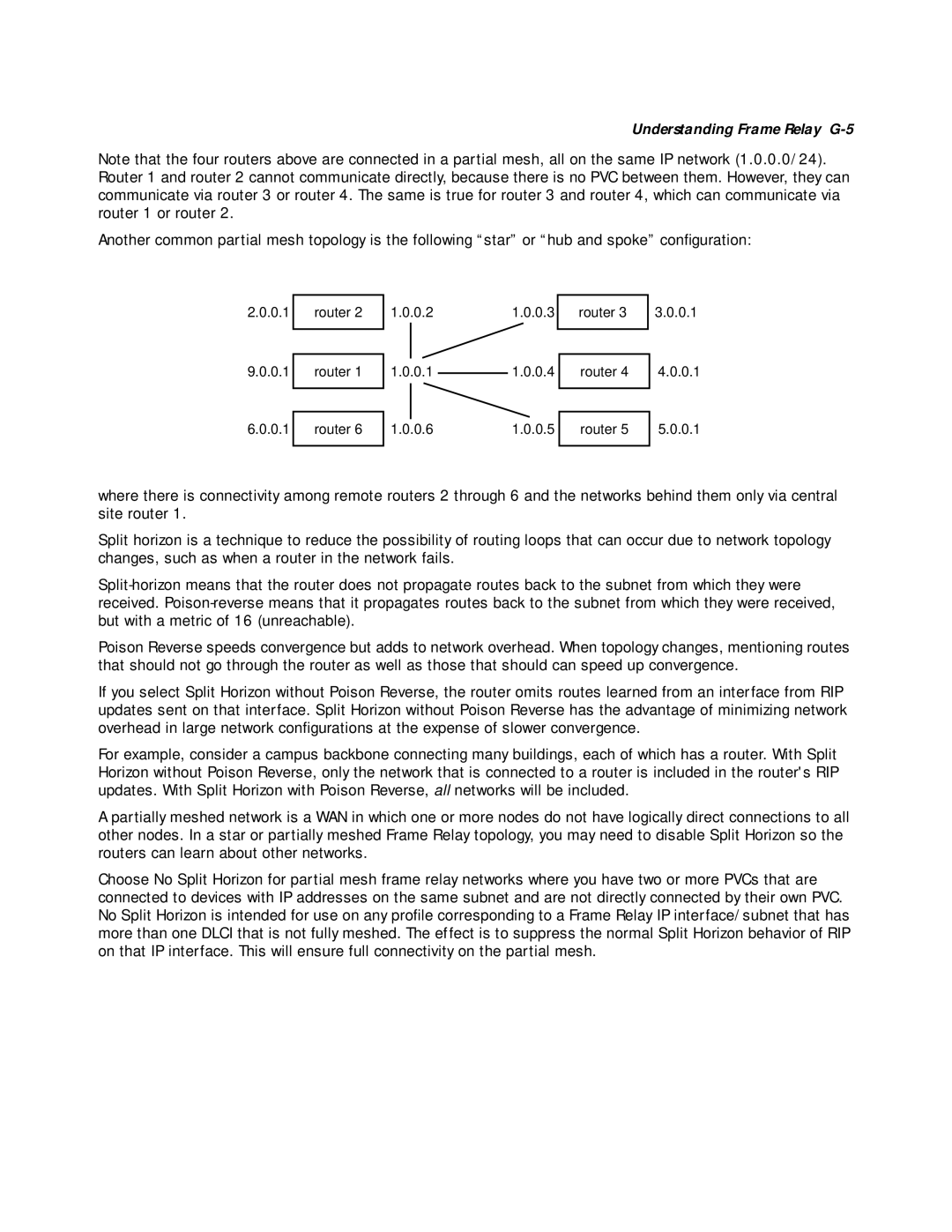
Understanding Frame Relay G-5
Note that the four routers above are connected in a partial mesh, all on the same IP network (1.0.0.0/24). Router 1 and router 2 cannot communicate directly, because there is no PVC between them. However, they can communicate via router 3 or router 4. The same is true for router 3 and router 4, which can communicate via router 1 or router 2.
Another common partial mesh topology is the following “star” or “hub and spoke” configuration:
2.0.0.1
9.0.0.1
6.0.0.1
router 2
router 1
router 6
1.0.0.21.0.0.3
1.0.0.11.0.0.4
1.0.0.61.0.0.5
| router 3 | 3.0.0.1 |
|
|
|
|
|
|
| router 4 | 4.0.0.1 |
|
|
|
|
|
|
| router 5 | 5.0.0.1 |
|
|
|
where there is connectivity among remote routers 2 through 6 and the networks behind them only via central site router 1.
Split horizon is a technique to reduce the possibility of routing loops that can occur due to network topology changes, such as when a router in the network fails.
Poison Reverse speeds convergence but adds to network overhead. When topology changes, mentioning routes that should not go through the router as well as those that should can speed up convergence.
If you select Split Horizon without Poison Reverse, the router omits routes learned from an interface from RIP updates sent on that interface. Split Horizon without Poison Reverse has the advantage of minimizing network overhead in large network configurations at the expense of slower convergence.
For example, consider a campus backbone connecting many buildings, each of which has a router. With Split Horizon without Poison Reverse, only the network that is connected to a router is included in the router's RIP updates. With Split Horizon with Poison Reverse, all networks will be included.
A partially meshed network is a WAN in which one or more nodes do not have logically direct connections to all other nodes. In a star or partially meshed Frame Relay topology, you may need to disable Split Horizon so the routers can learn about other networks.
Choose No Split Horizon for partial mesh frame relay networks where you have two or more PVCs that are connected to devices with IP addresses on the same subnet and are not directly connected by their own PVC. No Split Horizon is intended for use on any profile corresponding to a Frame Relay IP interface/subnet that has more than one DLCI that is not fully meshed. The effect is to suppress the normal Split Horizon behavior of RIP on that IP interface. This will ensure full connectivity on the partial mesh.
